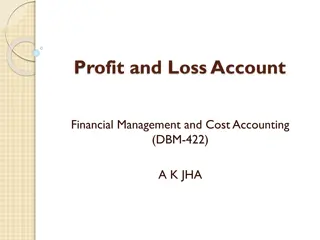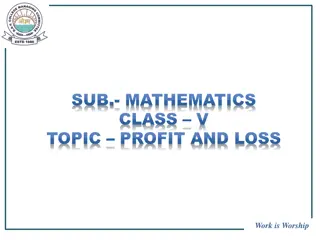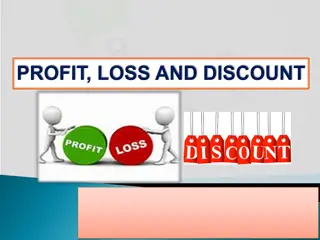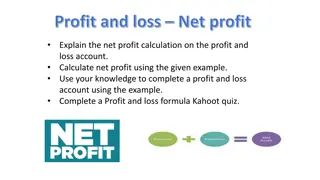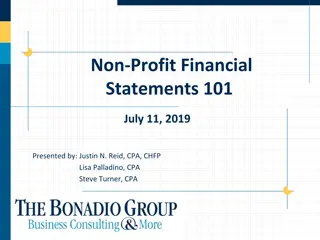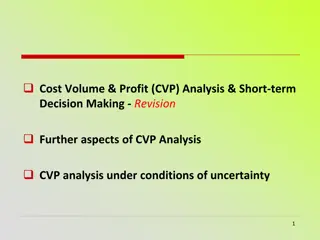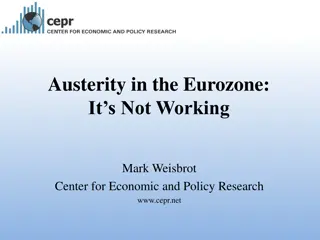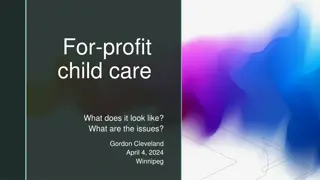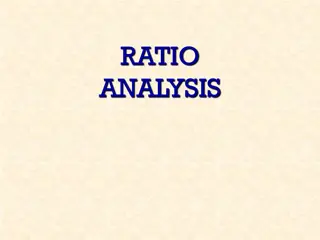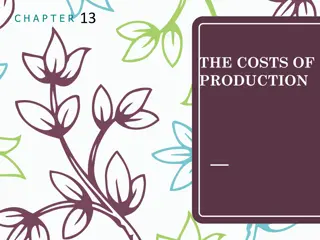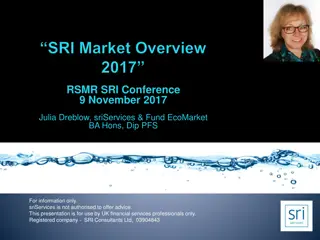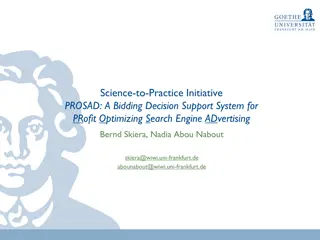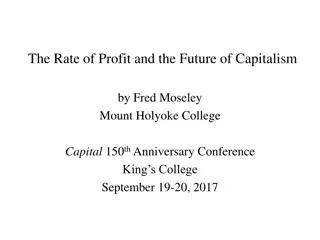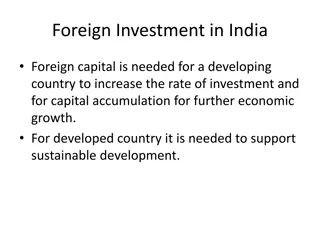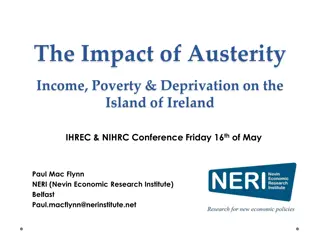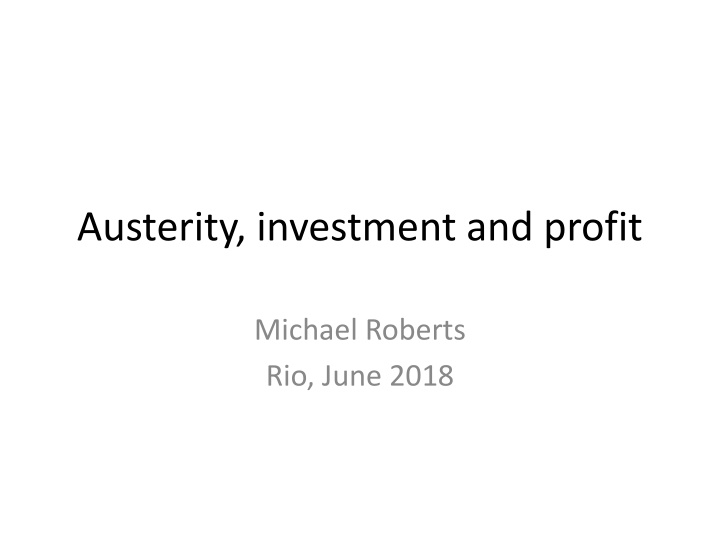
Austerity, Investment, and Profit in Economies
Explore the impact of austerity measures, investment trends, and profit dynamics in advanced and emerging economies post-global financial crisis. Learn about the Keynesian frameworks, business investment patterns, and the cycle of profit. Delve into the world rate of profit historical trends and their implications on economic cycles.
Download Presentation

Please find below an Image/Link to download the presentation.
The content on the website is provided AS IS for your information and personal use only. It may not be sold, licensed, or shared on other websites without obtaining consent from the author. If you encounter any issues during the download, it is possible that the publisher has removed the file from their server.
You are allowed to download the files provided on this website for personal or commercial use, subject to the condition that they are used lawfully. All files are the property of their respective owners.
The content on the website is provided AS IS for your information and personal use only. It may not be sold, licensed, or shared on other websites without obtaining consent from the author.
E N D
Presentation Transcript
Austerity, investment and profit Michael Roberts Rio, June 2018
Sluggish growth US annual real GDP growth % 5.0 4.0 3.0 2.0 1.0 0.0 -1.0 Average growth; 1948-17 = 3.2% 2002-07 = 2.7% 2010-17 = 2.2% -2.0 -3.0 -4.0 -5.0 Jan-02 Oct-02 Jul-03 Apr-04 Jan-05 Oct-05 Jul-06 Apr-07 Jan-08 Oct-08 Jul-09 Apr-10 Jan-11 Oct-11 Jul-12 Apr-13 Jan-14 Oct-14 Jul-15 Apr-16 Jan-17 Oct-17
Advanced economies: spending rose before the GFC 20000 44.0 43.0 18000 GFC! 42.0 16000 41.0 Rising spending before GFC 14000 40.0 39.0 12000 After GFC, spending held, falls as % of GDP 38.0 10000 37.0 8000 36.0 Govt spend % of GDP
Emerging economies: also 12000 32.0 After GFC, spending held 31.0 10000 30.0 GFC! 8000 29.0 Rising spending before GFC 6000 28.0 27.0 4000 26.0 2000 25.0 0 24.0 Govt spend % of GDP
Investment is the swing factor Change in investment and consumption 2007-10 , % 10.0 2.5 1.4 1.1 0.6 0.0 0.0 -0.1 -0.2 -1.5 -2.9 -3.2 -3.9 -4.0 -4.8 -10.0 -6.8 -8.8 -14.0 -13.8 -15.2 -20.0 -19.6 -17.0 -17.0 -30.0 -31.6 -40.0 -50.0 -55.2 -60.0 -60.2 -70.0 EU EZ Ger Fra Ita Spa Por Ire Gre US UK Jap Inv Cons
Business investment drops the most investment-slowdown
Keynesian identities Let us consider these identities. We start with: National income = national expenditure. National income can then be broken down to Profit + Wages; and National expenditure can be broken down to Investment + Consumption. So Profit + Wages = Investment + Consumption. Now if we assume that wages are all spent on consumption and not saved, then Profits = Investment.
A world rate of profit 45% RECOVERY GREAT DEPRESSION 40% NEO-LIBERAL RECOVERY GOLDEN AGE 35% PROFITABILITY CRISIS WAR 30% NEW CRISIS /DEPRESSION RECOVERY LONG DEPRESSION WAR 25% 20% 15% 1869 1875 1881 1887 1893 1899 1905 1911 1917 1923 1929 1935 1941 1947 1953 1959 1965 1971 1977 1983 1989 1995 2001 2007
Investment follows profitability G7: investment to GDP and rate of profit on capital (%) 26 12.5 Peak of investment and ROP 1980-89 New peak in ROP but not investment = FICTITIOUS CAPITAL 25 12.0 24 11.5 23 11.0 22 Recession 2001 10.5 21 Falling ROP eventually followed by investment and then great recession Recession 1990-93 10.0 20 9.5 19 Investment stays low with profitability post-crisis 18 9.0 Sources; Inv/GDP from IMF WEO database; ROP from Penn World Tables calculated by auhtor Investment/GDP ROP - RHS
Capex and net income Profitability and investment
Profits call the tune US corporate profit and investment
Keynes versus Marx Let us return to the Keynes-Kalecki macro identity. It can be re-designed as: Investment (non-capitalist) Savings = Profits But the Marxist logic is that the causal connection is the opposite. Thus the equation looks like this. Profits + (non-capitalist) Savings = Investment
Deviation from the pre-crisis IMF real growth forecast and fiscal tightening
The Krugman multiplier Change in cyclically adjusted primary balance and real GDP 2010-15 % - the Krugman measure Change in real GDP UK 20.0 15.0 IRELAND 10.0 GERMANY US 5.0 JAPAN FRANCE 0.0 ITALY SPAIN -5.0 PORTUGAL Correlations: G6: 0.58 GIPS: -0.28 ALL: -0.34 -10.0 -15.0 GREECE Change in CAPB = more austerity -20.0 0.0 2.0 4.0 6.0 8.0 10.0 12.0 14.0
The Keynesian multiplier Change in net government borrowing and real GDP 2010-15 % 0.0 Change in net govt borrowing = more austerity ITALY JAPAN -2.0 FRANCE EU EZ -4.0 SPAIN GERMANY UK -6.0 GREECE US PORTUGAL -8.0 Correlations: G6: -0.86 GIPS: -0.59 ALL: -0.21 IRELAND -10.0 Change in real GDP -12.0 -20.0 -15.0 -10.0 -5.0 0.0 5.0 10.0 15.0 20.0
China: Keynes or Marx? china-infrastructure
The Marxist multiplier 20.0 Change in real GDP IRELAND 15.0 UK US 10.0 GERMANY EU FRANCE 5.0 JAPAN EZ 0.0 SPAIN -5.0 ITALY PORTUGAL -10.0 Correlations: G6: 0.74 GIPS: 0.86 ALL: 0.48 -15.0 GREECE -20.0 Change in net return on capital -10.0 -5.0 0.0 5.0 10.0 15.0 20.0 25.0 30.0
Comparing the two US: Keynesian versus Marxist multipliers* 1.80 Correlations: Govt exp: -0.04 Net return on capital: +0.64 * Average real GDP growth as a ratio of average change in real govt exp and as a ratio of change in net return on capital 1.61 1.60 1.41 1.40 1.20 1.0 0.92 1.00 0.80 0.60 0.5 0.44 0.40 0.3 0.1 0.20 0.02 0.0 0.00 1971-80 1980-90 1990-00 02-07 08-14 ROP Govt exp
Brazil: Keynesian multiplier Change in govt spend to GDP and real GDP growth (%) 1954-2010 15.0 Real GDP growth % 13.0 Correlation = -0.25 11.0 9.0 7.0 5.0 3.0 1.0 -1.0 -3.0 -5.0 Change in govt spending to GDP % -15.0 -10.0 -5.0 0.0 5.0 10.0 15.0 20.0
Brazil: Marxist multiplier Change in rate of profit and real GDP growth % 1954-2010 20.0 Real GDP growth % Correlation = +0.09 15.0 10.0 5.0 0.0 -5.0 -10.0 Change in rate of profit % -15.0 -30.0 -20.0 -10.0 0.0 10.0 20.0 30.0 40.0 50.0

